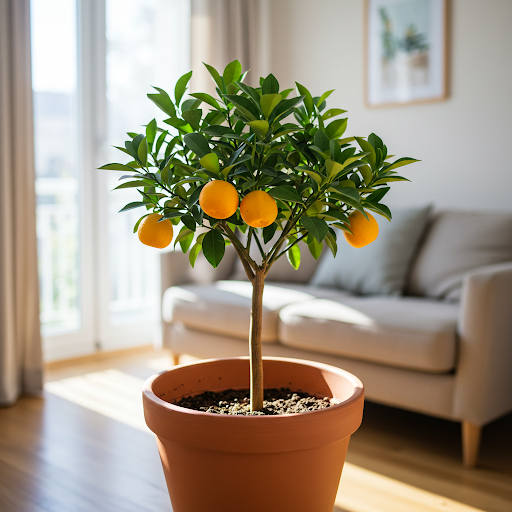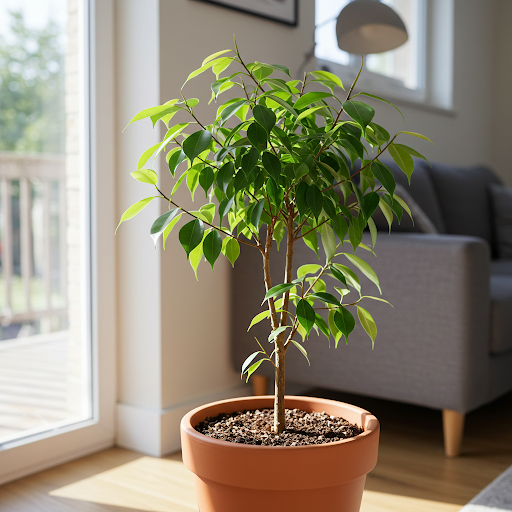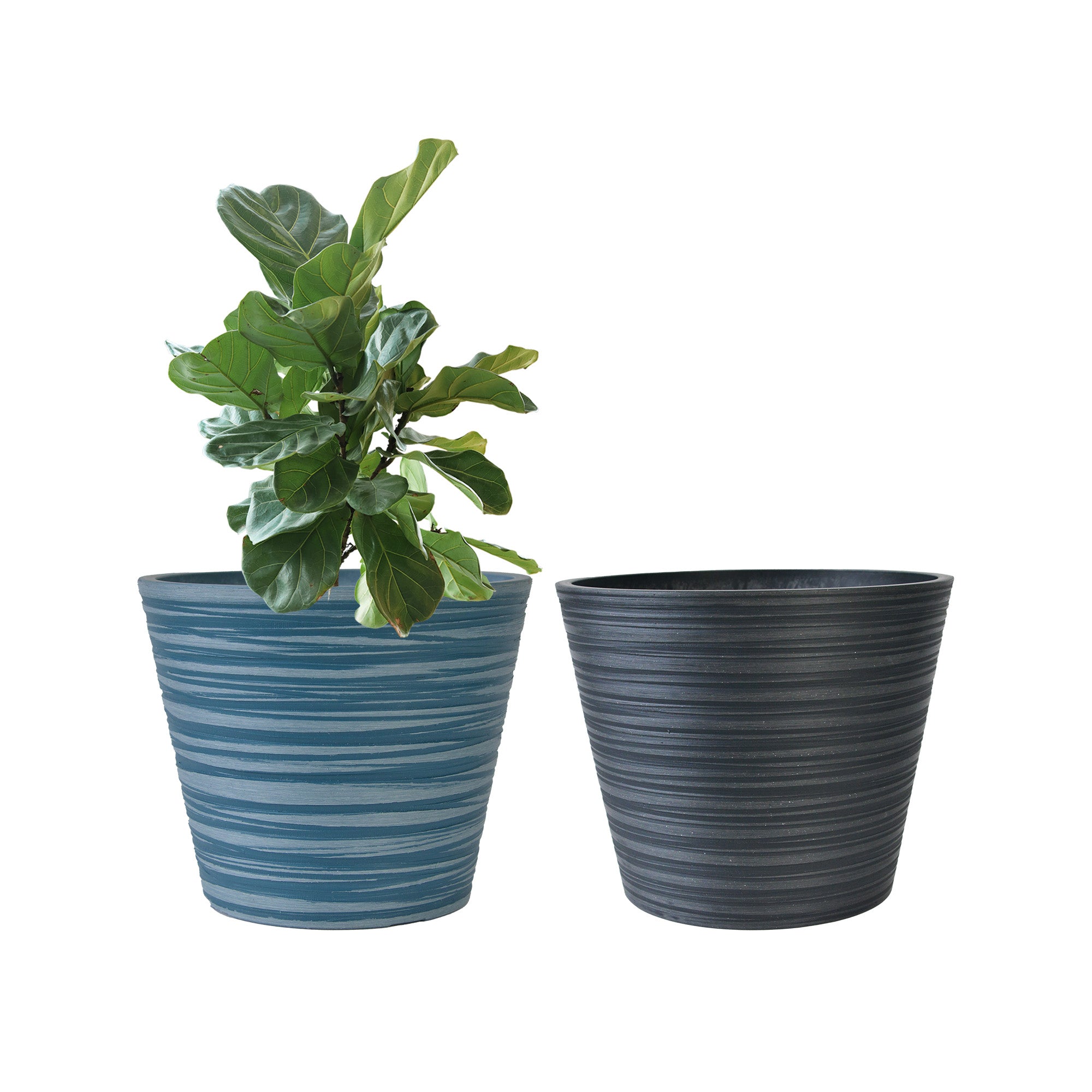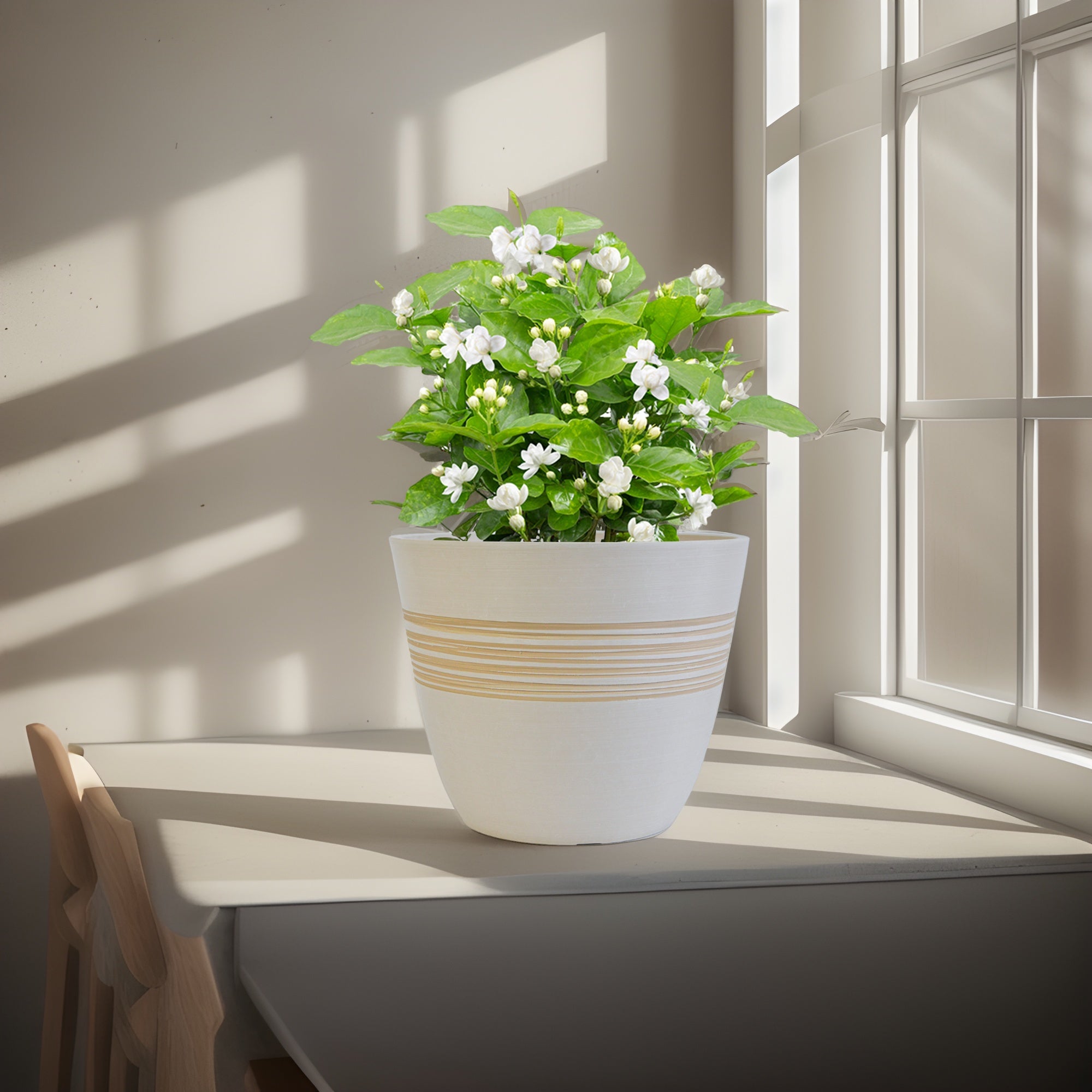Citrus Plants Indoors: Care, Pots, and Growing Tips
Want to enjoy the fresh scent of citrus blossoms and even grow your own lemons, limes, or oranges right inside your home? Citrus Plants, belonging to the Citrus genus, are popular evergreen trees and shrubs prized for their fragrant flowers, glossy leaves, and of course, their delicious and vitamin-rich fruits. While traditionally grown in warm, sunny climates, many citrus varieties are well-suited for indoor container growing, bringing a vibrant and productive touch of the Mediterranean or tropics to your interior spaces. This comprehensive guide will provide you with everything you need to know to grow Citrus plants indoors, from selecting the right varieties and pots to mastering essential care techniques for a thriving and fruit-bearing Citrus tree in your home.

Citrus Plants
What are Citrus Plants (Citrus)?
Citrus is a genus of flowering trees and shrubs in the rue family, Rutaceae, originating in tropical and subtropical Southeast Asia, and known for producing citrus fruits, including oranges, lemons, limes, grapefruits, mandarins, and many others. Citrus plants are characterized by their glossy, evergreen leaves, highly fragrant white flowers, and their distinctive and flavorful fruits which are a significant source of Vitamin C and other nutrients. Citrus varieties range in size from small shrubs to medium-sized trees. Indoors, citrus plants are typically kept smaller through container growing and pruning, and are prized for their fragrant blossoms, attractive foliage, and the rewarding experience of harvesting home-grown citrus fruits, making them a popular and productive houseplant.
Can Citrus Plants (Citrus) Thrive Indoors?
Yes, Citrus Plants (Citrus) can thrive indoors and are increasingly popular as houseplants. With the right conditions, many varieties will not only survive but flourish, producing fragrant flowers and even a harvest of fruit inside your home. Dwarf and semi-dwarf citrus varieties are especially well-suited for container growing and indoor environments. Growing citrus indoors allows you to enjoy the beauty and fragrance of these plants year-round, and with proper care, reap the delicious rewards of home-grown citrus fruits, even in cooler climates.
Ideal Indoor Growing Conditions for Citrus Plants (Citrus):
- Varieties of Citrus Plant (Citrus) for Indoors: While many citrus types can be grown in containers, dwarf and semi-dwarf varieties are best suited for indoor growing due to their manageable size and earlier fruiting. Popular indoor Citrus varieties include:
- Lemon: ‘Meyer Lemon’ (most popular for indoors, dwarf, prolific), ‘Lisbon Lemon’, ‘Eureka Lemon’ (standard size but can be pruned).
- Lime: ‘Key Lime’ (dwarf, good for containers), ‘Persian Lime’ (Bearss Lime).
- Orange: ‘Calamondin Orange’ (ornamental, small tart oranges), ‘Tangerine or Mandarin Orange’ varieties (dwarf mandarins like ‘Tango’ or ‘Gold Nugget’ can be suitable).
- Grapefruit: Dwarf grapefruit varieties are less common, but some semi-dwarf types may be manageable with pruning.
- Kumquat: Kumquats are naturally smaller trees and can do well indoors, producing small, sweet-rind fruits.
- Other Citrus: Citron, Buddha’s Hand Citron, Kaffir Lime. For indoor growing, choose dwarf or semi-dwarf varieties grafted onto dwarfing rootstock for best results in containers.
- Light: Citrus Plants need very bright light to thrive and fruit indoors. They are sun-loving trees and require at least 8-12 hours of direct sunlight per day to flower and fruit properly. South-facing windows are ideal, providing the most intense sunlight. West-facing windows can also work if they offer several hours of direct afternoon sun. East-facing windows may provide sufficient light, but supplemental lighting is often necessary, especially during winter months or in less sunny locations. Insufficient light is the most common reason for failure to fruit indoors and can lead to weak growth, leggy stems, and lack of flowering. Supplement natural light with strong grow lights(full-spectrum LED grow lights are recommended) to provide adequate light intensity and duration, especially during winter. Place grow lights a few inches above the plant canopy and keep them on for 12-16 hours per day.
- Soil: Citrus Plants need well-draining, slightly acidic soil that is rich in organic matter. Use a potting mix specifically formulated for citrus trees or acid-loving plants, or create your own mix using a base of high-quality potting mix, peat moss or coco coir for moisture retention, and perlite or vermiculite for drainage and aeration. The ideal pH range for citrus is between 6.0 and 7.0 (slightly acidic to neutral). Good drainage is critical to prevent root rot in container-grown citrus.
- Watering: Citrus Plants prefer consistent moisture, but not waterlogged soil. Water thoroughly when the top inch or two of soil is dry. Water deeply until water drains out of the drainage holes. Allow the soil to slightly dry out between waterings, but do not let it dry out completely, especially when plants are flowering or fruiting. Citrus are sensitive to both overwatering and underwatering. Overwatering can lead to root rot, while underwatering can cause leaf curl, leaf drop, and stress. Watering frequency will vary depending on light levels, temperature, humidity, pot size, and the plant’s growth stage. Check soil moisture regularly by feeling the soil. Use room temperature water. Rainwater or filtered water is preferred, as citrus can be sensitive to hard tap water and chlorine.
- Temperature: Citrus Plants thrive in warm temperatures during the growing season, ideally between 65°F to 85°F (18°C to 29°C). They are subtropical to tropical plants and prefer warm conditions year-round. In winter, they can tolerate slightly cooler temperatures, but avoid exposing them to temperatures below 50°F (10°C) for extended periods, as frost can damage or kill citrus trees. Ideal winter temperatures are between 55°F to 65°F (13°C to 18°C). Avoid sudden temperature fluctuations and cold drafts.
- Humidity: Citrus Plants prefer moderate to high humidity, ideally around 50% or higher. They benefit from humid conditions, especially during active growth, flowering, and fruiting. Dry indoor air, especially during winter heating, can lead to dry leaf tips and stress. Increase humidity by:
- Misting Regularly: Mist the foliage frequently with room temperature water, especially in drier indoor environments or during winter heating. Mist in the morning to allow leaves to dry by evening and prevent fungal issues.
- Pebble Trays: Place pots on trays filled with pebbles and water (water level below the pot base).
- Humidifier: Use a room humidifier, especially during dry seasons or winter heating, to maintain consistent humidity levels.
- Grouping Plants: Grouping Citrus Plants with other humidity-loving plants can create a slightly more humid microclimate.
- Greenhouse Cabinet or Terrarium (for smaller plants): For very dry homes, growing smaller citrus in a greenhouse cabinet or large terrarium can provide the necessary humidity and warmth.
Planting Your Citrus Plant (Citrus) Indoors:
- Starting from Seed, Cuttings, Grafted Plants, or Potted Plants: Citrus Plants can be started from seed, but seedling trees take many years to fruit (if at all) and may not be true to type (not the same as the parent fruit). Propagation from cuttings is possible, but can be challenging for home growers. Grafted citrus trees are the most reliable and recommended choice for fruit production, as they combine desirable fruiting varieties with hardy rootstock. Purchasing established potted grafted citrus plants from reputable nurseries, garden centers, or online retailers specializing in fruit trees is the easiest and fastest way to start growing fruit-bearing citrus indoors.
- Choosing Grafted Trees: Look for grafted citrus trees labeled as “dwarf” or “semi-dwarf” and suitable for container growing. Ensure the graft union (a visible bulge near the base of the trunk) is healthy.
- Planting Time: Citrus Plants can be planted or repotted at any time of year indoors, but spring or early summer, at the start of the growing season, is generally recommended for optimal establishment and growth.
Choosing the Right Pots for Indoor Citrus Plants (Citrus):
- Suitable Pot Types: Select pots with excellent drainage and good aeration. Terracotta pots, ceramic pots, or specialized breathable fabric pots are all suitable. Terracotta is often favored for citrus as it is porous and helps the soil dry out slightly, which is beneficial and helps prevent overwatering. Ensure pots are sturdy and stable enough to support the mature size of the tree, especially when it bears fruit.
- Drainage: Drainage is paramount for Citrus Plants to prevent root rot. Ensure your chosen pot has large drainage holes at the bottom. Elevate the pot slightly to ensure drainage holes are not blocked. You can also add a layer of gravel or pot shards at the base of the pot to improve drainage further.
- Pot Size: Choose a pot that is appropriately sized for the current size of the plant and allows for substantial growth. Citrus trees will need repotting into larger containers as they mature. Start with a pot that is 2-4 inches larger in diameter than the root ball when repotting. Young citrus plants can start in 8-10 inch pots. Mature indoor Citrus Plants, especially dwarf varieties, may eventually need pots that are 16-24 inches in diameter or larger to accommodate their root system and long-term growth. Choose a pot size that is manageable for your space and consider using pots on casters for easier movement of larger plants.
- Potting Mix: Use a well-draining, slightly acidic potting mix specifically formulated for citrus trees or acid-loving plants.
Essential Care Tips for a Thriving Indoor Citrus Plant (Citrus):
- Watering Schedule: “Water Thoroughly, Allow Topsoil to Dry Slightly”. Water thoroughly when the top 1-2 inches of soil are dry. Allow the topsoil to slightly dry between waterings, but avoid letting it dry out completely, especially during flowering and fruiting. Avoid overwatering and soggy soil.
- Light Management: Intense Bright Light is Absolutely Essential. Provide at least 8-12 hours of direct sunlight per day, supplemented with strong grow lights if needed, especially in winter.
- Humidity Management: Maintain Moderate to High Humidity. Increase humidity through misting, pebble trays, or humidifiers, especially during dry indoor conditions.
- Fertilizing: Regular and Balanced Feeding is Crucial for Fruiting. Citrus Plants are heavy feeders and require regular fertilization, especially during the growing season (spring and summer), to support their growth, flowering, and fruit production. Fertilize every 2-4 weeks during the growing season with a citrus-specific fertilizer or a balanced liquid fertilizer (20-20-20 or similar) diluted to half strength. Follow package instructions carefully. Citrus fertilizers often contain micronutrients like iron, zinc, and manganese, which are important for citrus health. Reduce or stop fertilizing during the fall and winter dormant period.
- Pruning (Annually for Shape, Size, and Fruit Production): Prune Citrus Trees annually in late winter or early spring, before new growth begins, to maintain desired shape and size, remove any dead, damaged, or crossing branches, improve air circulation, and encourage fruit production. Prune lightly to shape the tree and remove any suckers growing from below the graft union.
- Repotting Schedule: Repot Citrus Plants every 2-3 years, or when they become root-bound or the potting mix is depleted. Repot in spring or early summer. Repotting into fresh citrus potting mix is beneficial for their long-term health and fruit production.
- Winter Dormancy/Cool Period (Beneficial for Flowering): While not strictly necessary, providing a slightly cooler dormant period in winter with temperatures between 55-65°F (13-18°C) and slightly reduced watering can encourage better flowering and fruiting in the following spring.
- Pollination (Hand-Pollination Indoors): Indoor citrus trees may need hand-pollination to ensure fruit set, as natural pollinators (bees, etc.) may not be present indoors. When flowers are open, use a small, soft brush to gently transfer pollen from flower to flower.
- Pest and Disease Control: Monitor Citrus Plants for common citrus pests like aphids, spider mites, scale insects, mealybugs, and citrus leaf miners. Indoor citrus can also be susceptible to fungal diseases if humidity is too high and air circulation is poor. Ensure good air circulation and avoid overcrowding. Root rot is a major concern if overwatered. Ensure excellent drainage and avoid overwatering to prevent root rot and fungal issues. Inspect plants regularly and treat any pest infestations promptly with horticultural oil, insecticidal soap, or neem oil. For fungal issues, improve air circulation, reduce humidity if excessive, and use a copper-based fungicide if necessary.
Popular Citrus Cultivars for Indoor Growing (by Fruit Type):
- Lemons: ‘Meyer Lemon’, ‘Eureka Lemon’, ‘Lisbon Lemon’, ‘Ponderosa Lemon’
- Limes: ‘Key Lime’, ‘Persian Lime’ (Bearss Lime), ‘Kaffir Lime’
- Oranges: ‘Calamondin Orange’, ‘Tangerine ‘Tango’, Mandarin ‘Gold Nugget’, ‘Owari Satsuma Mandarin’
- Grapefruits: ‘Rio Red Grapefruit’ (semi-dwarf), ‘Chandler Pomelo’ (large, may need more space)
- Kumquats: ‘Nagami Kumquat’, ‘Meiwa Kumquat’
- Other Citrus: ‘Buddha’s Hand Citron’, ‘Citron ‘Etrog”, ‘Yuzu’

Citrus Plants
In Summary:
Growing Citrus Plants (Citrus) indoors is a rewarding way to bring the beauty, fragrance, and delicious fruit of the Mediterranean and tropics into your home. Their glossy foliage, fragrant blossoms, and edible fruits make them captivating and productive houseplants. By providing intense bright light, well-draining citrus potting mix in pots with excellent drainage, watering appropriately and allowing the topsoil to slightly dry between waterings, maintaining moderate to high humidity, providing regular citrus fertilization, and offering annual pruning, you can successfully cultivate thriving and fruit-bearing Citrus Trees indoors and enjoy a taste of sunshine year after year.
For more detailed botanical information and to explore the diversity of the Citrus genus, you can visit the Wikipedia page on Citrus.
Important Note: Citrus Plants (Citrus) are generally considered non-toxic to humans and pets, though some individuals may be sensitive to citrus oils. The primary care challenges with indoor citrus are providing sufficient intense light and consistent, balanced care including proper watering, humidity, and fertilization to support their high light and nutrient needs for healthy growth and fruit production. With attention to these key requirements, you can successfully grow these delightful and productive trees indoors and enjoy your own home-grown citrus harvest.
Planter 5 in W / 8 in W / 12 in W or Indoor Outdoor Plants, Modern Decorative Plant Pots with Drainage Hole, Decorative Flower Pots
By greenship-seo|2025-04-10T06:37:58+00:00January 16, 2025|Categories: Hand-carving Series|Tags: Decorative Flower Pots|
HS
By greenship|2024-08-13T06:45:17+00:00August 13, 2024|Categories: Hand-carving Series|
Planter 6 in W / 8 in W / 12 in W Indoor or Outdoor Plants, Modern Decorative Plant Pots with Drainage Hole, Decorative Flower Pots
By greenship-seo|2025-02-06T13:43:53+00:00January 16, 2025|Categories: Hand-carving Series|Tags: Decorative Flower Pots|
11TH
By greenship|2024-08-13T02:50:25+00:00August 13, 2024|Categories: Hand-carving Series|
k2-21G
By greenship|2024-08-13T06:17:26+00:00August 13, 2024|Categories: Hand-carving Series|
Planter for Indoor Outdoor Plants, Set of 2 Modern Decorative Plant Pots with Drainage Hole, Decorative Flower Pots
By greenship-seo|2025-04-10T07:46:01+00:00January 9, 2025|Categories: Hand-carving Series|Tags: Decorative Flower Pots, Self-Watering Pots|






